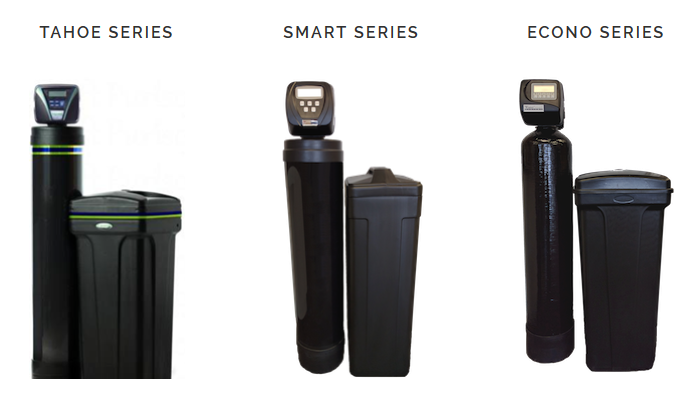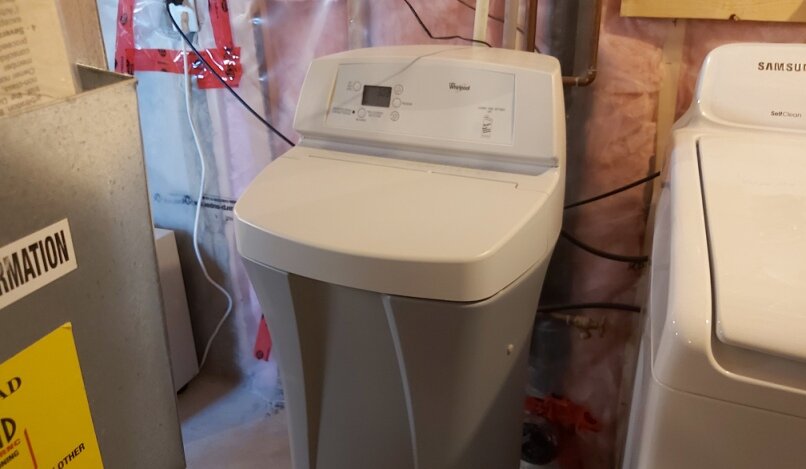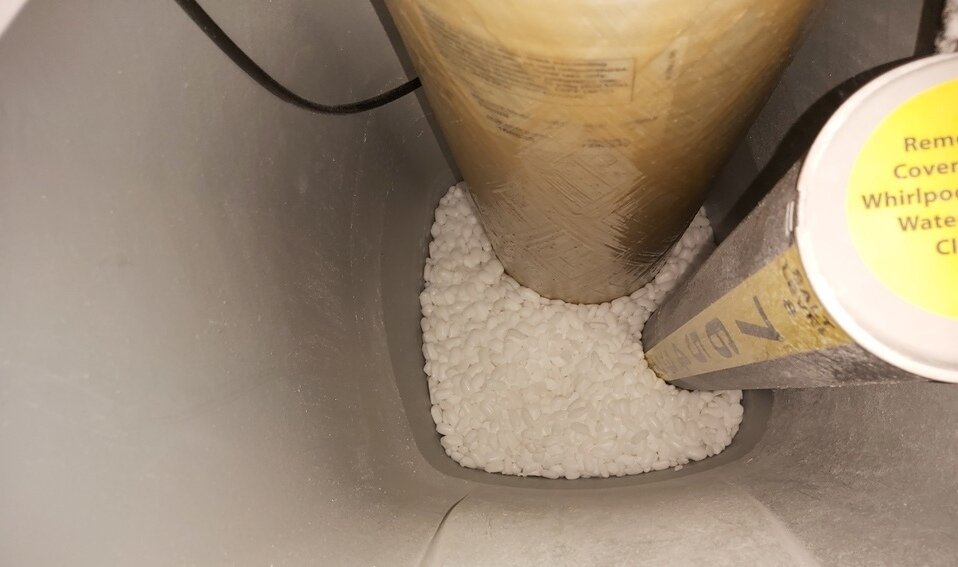How much water do you need in your water softener brine tank? Generally, the water level should be slightly lower than the salt level.
However, different tanks will require different setups for optimal performance.
Read on and we’ll let you know why your water level is important and what you should do if isn’t the right amount.
1. How much water should you have in your water softener brine tank?
2. What type of tank do you have?
3. How to tell if you have a "wet" or "dry" water softener brine tank
4. Rule of thumb for brine tanks
Contact us today for immediate assistance.
1. How Much Water Should You Have in Your Water Softener Brine Tank?
Your Water Level Should Be Slightly Lower than Your Salt Level
The brine tank is the part of your water softener that holds the salt.
Your water level should always be slightly lower than your salt level in your water softener brine tank. That’s because the water needs to touch the salt so that it can absorb it and create the correct concentration of brine.
If your water level is higher than the salt in your brine tank, then the water sitting above the salt isn't in direct contact with the salt. Therefore, it won't absorb the salt to the same high concentration as the water that is sitting below the salt.
That’s why it’s important to always make sure that your water is lower than the salt.
Your Brine Tank Should Never Be Full of Water:
Your water softener brine tank should never be full of water. Even if your water softener brine tank is half full of water, then you have a problem.
You may have too much water in your brine tank if your safety float is set too high.
If Your Brine Tank Has Too Much Water, Contact a Professional:
Usually, if you have excess water in your brine tank, it means that there is something wrong mechanically or you may have a frozen drain line.
Some other common reasons why you might have too much water include:
The valve that controls the water flow is broken,
Your water softener is older and has become unstable, or
The safety valve in your water softener is set too high
If you notice any of these issues, then it is a good idea to contact a water softener repair professional to fix it.
2. What type of Tank do you have?
The amount of water will depend on the type of brine tank you have.
The most common type of water softener is made up of two components: a tall and narrow water softener tank and a shorter and wider brine tank.
Some models, however, have both the water softener tank and brine tank combined into one unit. The process of softening your water is the same regardless of the type you have.
Examples of water softeners
There are also two basic types of brine tanks: wet and dry.
Wet Brine Tanks:
If you have an older water softener, chances are it has a "wet" brine tank. This means that you will have water in your brine tank all the time.
This type of brine tank typically has about 11-23 litres (3-6 gallons) of water in it at all times. That works out to about 15-25 cm (6-10 inches) of water.
The water will be in your tank even in between regeneration times or cycles. You may not see the water if your salt level is higher than your water level.
Dry Brine Tanks:
If you have a new water softener system, then you possibly have a "dry" brine tank.
A dry water softener brine tank means that you will only have water in your tank an hour or two before your softener is ready to go through a regeneration cycle.
When your softener is in between cycles, it shouldn't have water in it.
A dry water softener brine tank only has water in it a few hours before each regeneration cycle.
3. How to Tell if You Have a "Wet" or "Dry" Water Softener Brine Tank
There are a couple of ways that you can tell whether you have a wet or dry water softener brine tank.
If you have a digital valve and you have a newer system, then chances are you have a "dry" brine tank.
The best way to find out, however, is to contact the water softener company that you purchased it from and ask.
4. Rule of thumb for brine tanks
It is possible to have either too much or too little salt in your brine tank.
To keep your water softener working at maximum efficiency, you need to maintain the proper amount of salt.
A good rule of thumb to follow is to:
Keep your brine tank at least one quarter full of salt at all times
Don't fill your salt up past 4 to 6 inches below the top of your brine tank.
Make sure that your salt level always stays a few inches above the water level in your brine tank.
To learn some more helpful tips for adding salt to your water softener brine tank, check out our post "How Much Salt to Put in Water Softener Brine Tank."
At WaterSmart, we have over 25 years of experience in the water softener industry, and we'd love to share our expertise with you!
Rely on WaterSmart
If you need your water softener repaired in the Kitchener-Waterloo region, you can trust WaterSmart. We'd be happy to help you with any repair or service on any type of water softener you have, at a reasonable rate.
Our expert, experienced plumbers will come to your home, take a look at your system, and advise you about the best course of action.
Whenever possible, we will fix your existing unit, and if you need a replacement, we can advise you on what type of softener would best meet your needs. We even offer financing.









